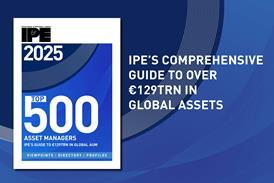Duration extension - to do or not to do?
The Dutch pension-funds regulator has issued a new consultation document in October 2004. This contains provisions which will form the basis of financial regulation from 2006, when the new Dutch Pensions Act comes into force. The new regulatory framework (Financieel Toetsingskader, or FTK in Dutch) will consist of a solvency ...
You have now reached your article limit
Already a registered user or member? Sign in here
To continue reading, register free today for access
Registration also includes access to

Five reasons to register today
- Access to IPE articles from our award-winning editorial team
- Unique IPE market data, rankings and tables
- In-depth interviews with pension fund leaders
- Extensive coverage of latest asset class trends
- Comprehensive archive of data, research and intelligence








